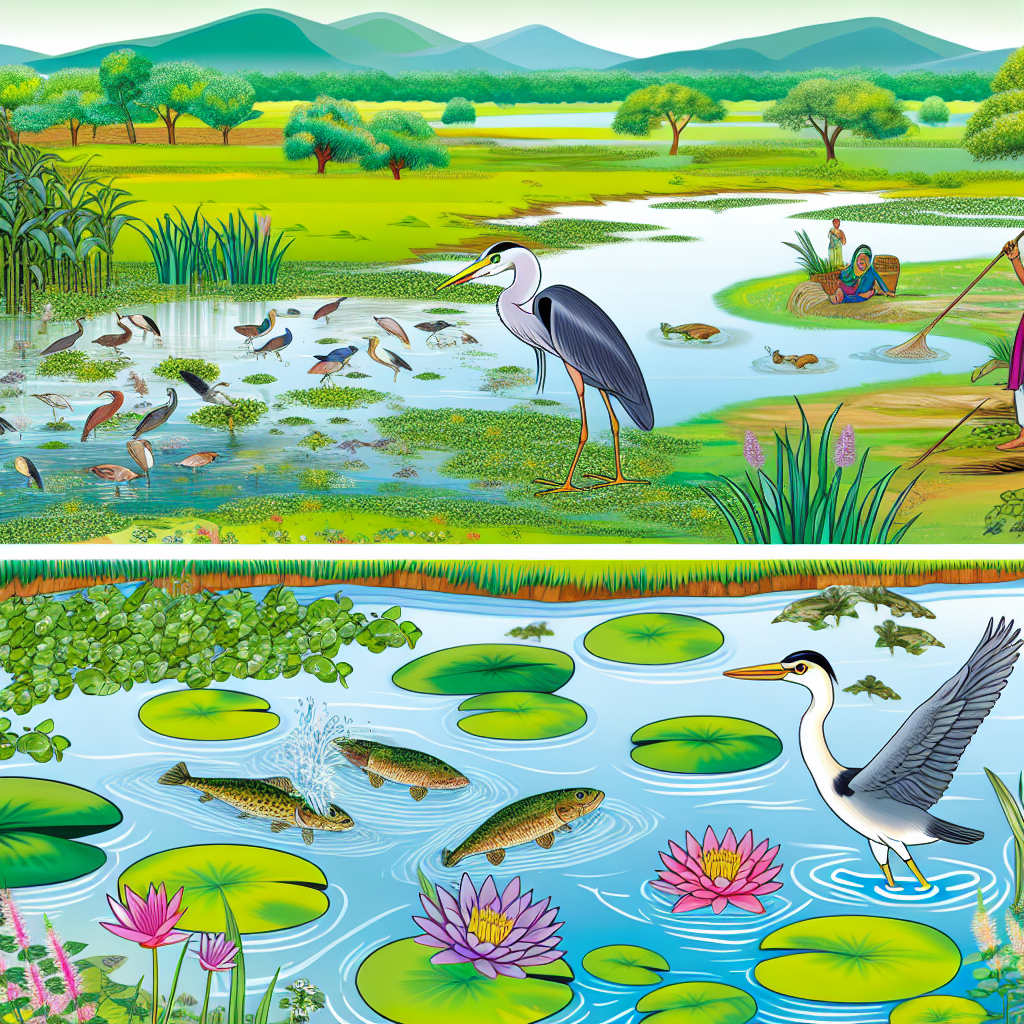
Wetland Services and Its Importance for Sustainability in India
India is home to a rich diversity of ecosystems, among which wetlands play a crucial role. These ecosystems are often overshadowed by the more prominent forests and rivers, yet they offer a range of essential services that contribute significantly to environmental sustainability. This article aims to shed light on the various services provided by wetlands and their importance in fostering sustainability in India.
Types of Wetlands in India
Wetlands in India can be broadly classified into several types, including:
- Coastal Wetlands: These include mangroves, estuaries, and lagoons.
- Inland Wetlands: Lakes, swamps, marshes, and floodplains fall under this category.
- Man-made Wetlands: Ponds, reservoirs, and paddy fields often come under this classification.
Given their diversity, wetlands support a variety of flora and fauna and perform multiple functions that are essential for ecological balance and sustainability.
Ecological Importance of Wetlands
1. Biodiversity Hotspots
Wetlands are rich reservoirs of biodiversity. They provide habitats for numerous species of plants, fish, amphibians, reptiles, and birds. For instance, the Keoladeo National Park in Rajasthan is a UNESCO World Heritage Site that serves as a wintering ground for numerous bird species, some of which are endangered.
2. Natural Water Filters
Wetlands act as nature’s kidneys. They have the ability to absorb, filter, and purify water by trapping pollutants and sediments from runoff, which contributes to improving water quality.
3. Flood Control
By acting as sponges, wetlands can absorb excess water during heavy rainfall, thus mitigating floods. For example, the East Kolkata Wetlands serve as a buffer zone, protecting the city from frequent floods.
Economic Benefits
1. Fisheries and Aquaculture
Wetlands contribute significantly to the economy by supporting fisheries and aquaculture. The Chilika Lake in Odisha, the largest coastal lagoon in India, sustains thousands of fishers through its rich fish and prawn resources.
2. Agriculture
Many wetlands, especially floodplains, are used for sustainable agriculture. Paddy fields, a type of man-made wetland, are essential for rice cultivation in several regions, providing a staple food for millions of Indians.
3. Tourism and Recreation
Wetlands also offer opportunities for tourism and recreation. Bird-watching, boating, and nature walks in wetland areas can generate significant income for local communities. The backwaters of Kerala, for instance, are a major tourist attraction, providing livelihood for many.
Challenges Faced by Wetlands in India
Despite their importance, wetlands in India face numerous challenges:
- Urbanization: Rapid urban development has led to the loss and degradation of many wetlands.
- Pollution: Industrial discharge, sewage, and agricultural runoff are major pollutants affecting wetland health.
- Invasive Species: Non-native species can disrupt the natural balance of wetland ecosystems.
- Climate Change: Rising temperatures and changing rainfall patterns pose a threat to wetland ecosystems.
Conservation Efforts
1. Policy and Legislation
The Government of India has implemented various policies and legislations for wetland conservation. The Wetlands (Conservation and Management) Rules, 2017, aim at the sustainable use and preservation of these critical habitats.
2. Community Participation
Local communities play a vital role in wetland conservation. Initiatives such as community-based wetland management have been successful in areas like Loktak Lake in Manipur, where local fishers are involved in conservation efforts.
3. Restoration Projects
Several government and non-governmental organizations are involved in wetland restoration projects. The rejuvenation of urban wetlands in cities like Bengaluru and Chennai has shown promising results, contributing to flood mitigation and improved water quality.
Conclusion
Wetlands are invaluable assets that offer a multitude of ecological, economic, and social benefits. The diverse services they provide—from enhancing biodiversity to supporting livelihoods—are crucial for the sustainability of India’s environment and economy. However, the threats they face necessitate urgent and concerted conservation efforts. By recognizing the importance of wetlands and implementing effective conservation strategies, we can ensure that these vital ecosystems continue to thrive for future generations.
Sustainable management of wetlands is not just an environmental necessity but also a crucial step towards achieving broader sustainability goals. As we move forward, it is imperative to place wetlands at the forefront of our environmental agenda, ensuring their protection and sustainable use for the betterment of all.
